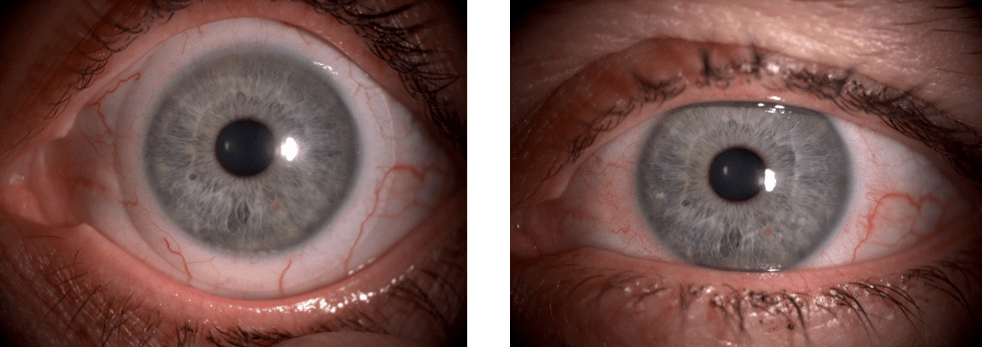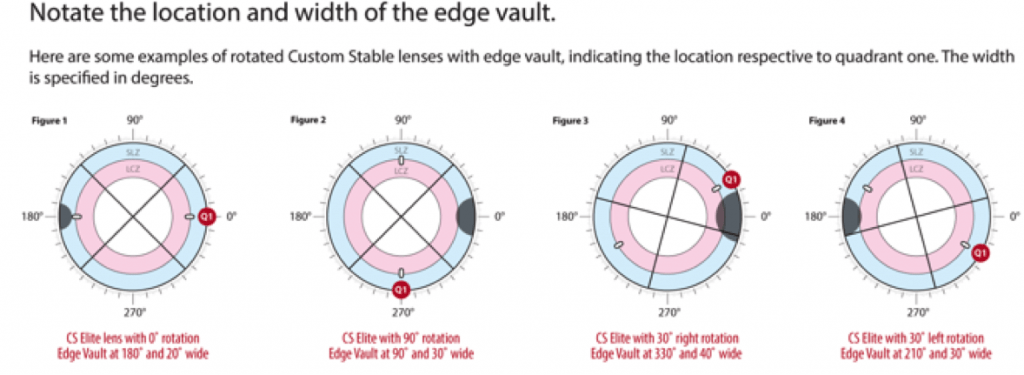Pinguecula and Scleral Lenses
By Martin Conway
There are occasions when an elevation on the surface of the conjunctiva such as a pinguecula may be compromised by the edge of a scleral lens. This can cause irritation and injection, but most labs can offer a solution to this problem, and it should not deter the practitioner from proceeding with what would otherwise be a successful fit.
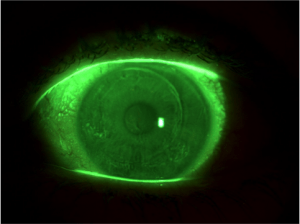
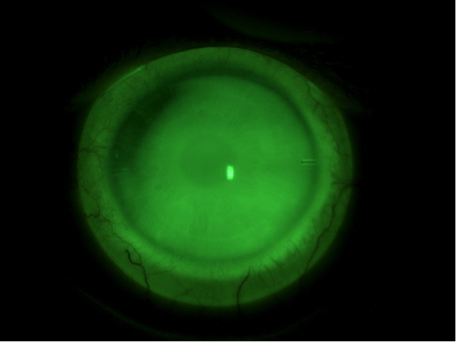
In order to ensure that the notch or elevation locates in the correct position upon insertion, it is advisable to stabilise the lens using prism ballast, or more preferably by refitting with a toric periphery.
Remember you can consult your lab and each lab has their own fitting philosophy. The suggested process to describe what lens you require for this issue is:
- Locate the position of the pinguecula in relation to the location markings on the fitting lens, i.e. “ along 190 degrees”.
- Describe the width of the notch as an angular measurement using the narrow beam and the axis guide on the slit lamp. i.e. 20 or 30 degrees.
- Describe how far into the matrix of the lens you wish to ingress i.e. 1.5 or 2.0 mm.
Some labs may offer an elevated section rather than a notch. The same process applies, however:
- Stabilise the lens, locate the direction of the elevation in relation to the lens markings.
- Use an angular measurement to describe the width of the elevation, but in the case of an elevation, you will need to specify the height required (up to 600 micron).
The final instruction to the lab, for a notch, will therefore be: “Notch along 190 degrees. 30 degrees width, 1.5 mm deep.” The lab will cut into the lens using a standard tool (normally around 8.00 mm radius) to give a smooth rounded curve and avoid contact with the pinguecula.
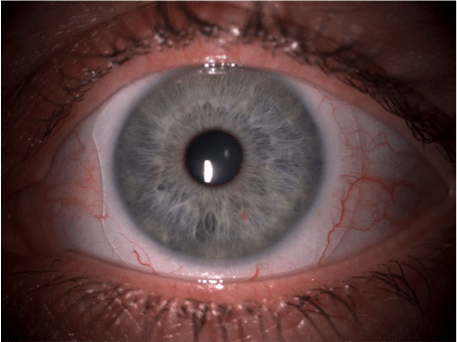
The graphic below shows how Valley Contax illustrates edge vaults with their Custom Stable Lens.
Thank you to Falco Kontaktlinsen (lens on eye) and Valley Contax (edge vault graphic) for contributing imagery to this article.

Martin Conway has over 40 years’ experience in the contact lens field as a qualified Contact Lens Optician. He is registered with the UK General Optical Council on the Speciality Contact Lens Register. Martin is a fellow of the British Contact Lens Association (FBCLA), and The International Association of Contact Lens Educators (FIACLE). He has served in the Professional Services role as an educator and clinical adviser on behalf of both Sauflon and CIBA, and now acts as Professional Services Consultant for Contamac. Martin has lectured extensively in Europe, Asia, Russia, North and South America and the Middle East.
More articles by Martin Conway:
Making a Difference with Sclerals

